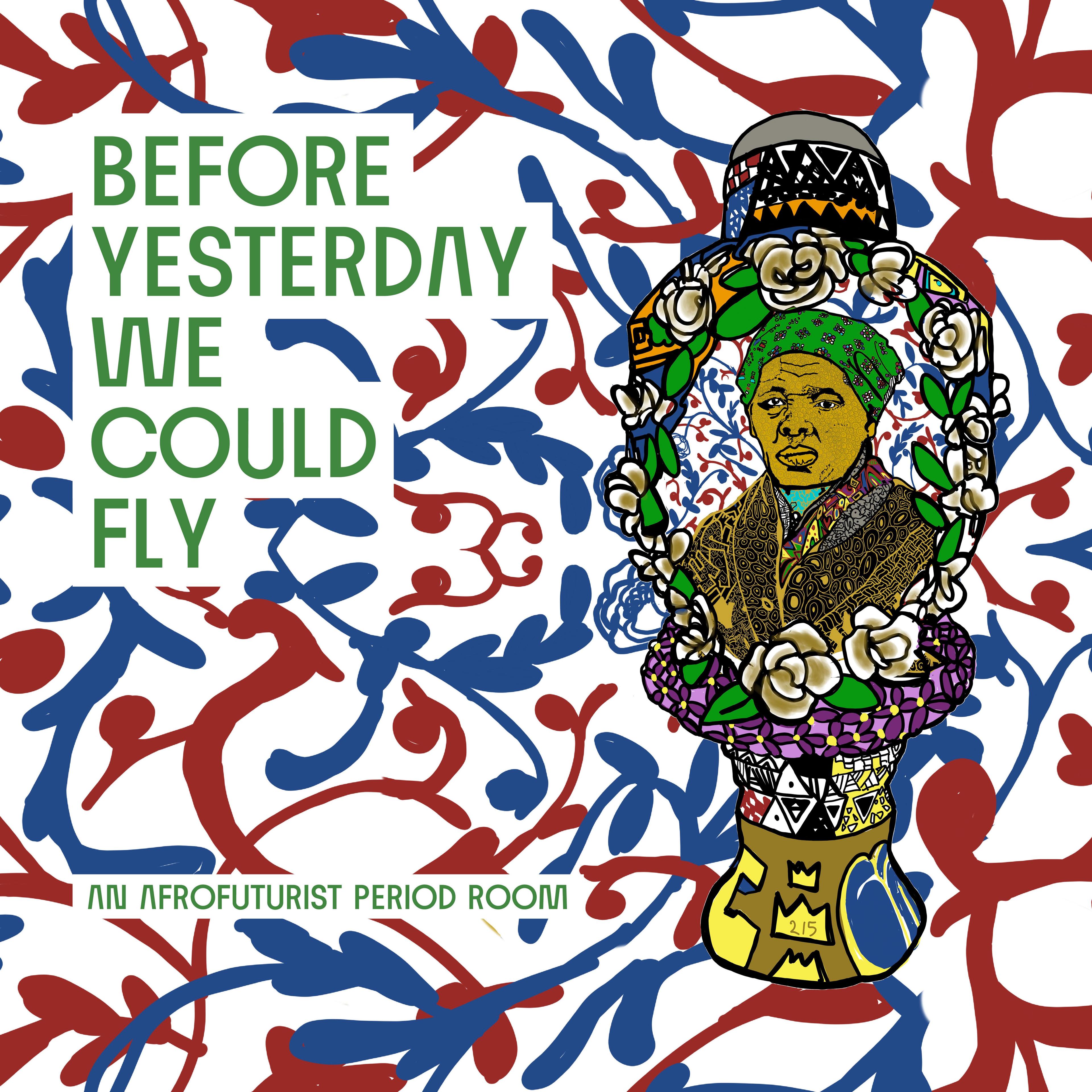Seneca Village—a vibrant nineteenth-century community of predominantly Black landowners and tenants—flourished in an area just west of The Met, in what is now Central Park. By the 1850s, the village comprised some fifty homes, three churches, multiple cemeteries, a school, and many gardens. It represented both an escape from the crowded and dangerous confines of lower Manhattan and a site of opportunity, ownership, freedom, and prosperity. In 1857, to make way for the park, the city used eminent domain to seize Seneca Village land, displacing its residents and leaving only the barest traces of the community behind.
This project has roots in the homes of Seneca Village, of which only a fragmented history remains. Like other period rooms throughout the Museum, this installation is a fabrication of a domestic space that assembles furnishings to create an illusion of authenticity. Unlike these other spaces, this room rejects the notion of one historical period and embraces the African and African diasporic belief that the past, present, and future are interconnected and that informed speculation may uncover many possibilities. Powered by Afrofuturism—a transdisciplinary creative mode that centers Black imagination, excellence, and self-determination—this construction is only one proposition for what might have been, had Seneca Village been allowed to thrive into the present and beyond.
The title, Before Yesterday We Could Fly, is inspired by Virginia Hamilton's legendary retellings of the Flying African tale, which celebrates enslaved peoples’ imagination, creative uses of flight, and the significance of spirituality and mysticism to Black communities in the midst of great uncertainty. Activated through vision, sound, and storytelling, and furnished with a kaleidoscope of works from The Met's collection—from Bamileke beadwork and 19th-century American ceramics to contemporary art and design that celebrates rich and diverse traditions—the room foregrounds generations of African diasporic creativity. Before Yesterday We Could Fly also celebrates a number of new acquisitions made specifically for the project and is animated by exciting commissions from Njideka Akunyili Crosby, Fabiola Jean-Louis, and Jenn Nkiru.
In keeping with the collaborative spirit of Afrofuturism, The Met’s curatorial team worked with lead curator Hannah Beachler, who envisioned and designed this space with consulting curator Michelle Commander. Since 2019, the group has engaged numerous creative and intellectual partners to infuse the installation with additional ideas and perspectives. Here, at a vital intersection at the heart of the Museum, this project opens a space for yet more histories to be told that look toward a more resilient future.
The exhibition is made possible by the Hobson/Lucas Family Foundation and the Director’s Fund.
Additional support is provided by Art Mentor Foundation Lucerne and the Terra Foundation for American Art.
The Met’s quarterly Bulletin program is supported in part by the Lila Acheson Wallace Fund for The Metropolitan Museum of Art, established by the cofounder of Reader’s Digest.
#MetAfrofuturist
Accessibility

This exhibition features ambient audio for the five-channel digital video installed in the Living Room and Television section.
For assistive listening, join our free WiFi network (MetMuseumFreeWiFi) and select the short URL below to connect to exhibition-specific content.
First-time users will need to select the short URL a second time after downloading the “Listen Everywhere” app.
Latest reviews
[An] incredible feat of imagination and love. It’s extraordinary.
Breathtaking... immersive… transformational.
Exhibition Catalog
Before Yesterday We Could Fly: An Afrofuturist Period Room Bulletin
The Met’s latest Bulletin features texts that honor the real, lived history of the Seneca Village residents and explores works by Black creators from the eighteenth century to the present day through the lens of Afrofuturism. The publication also includes an original graphic novella by author and illustrator John Jennings.
